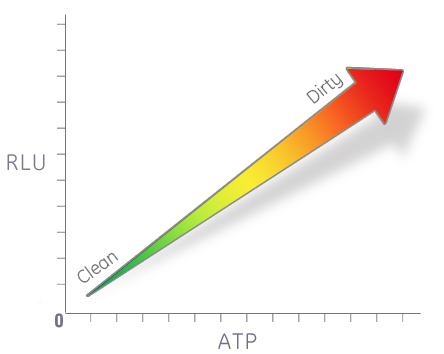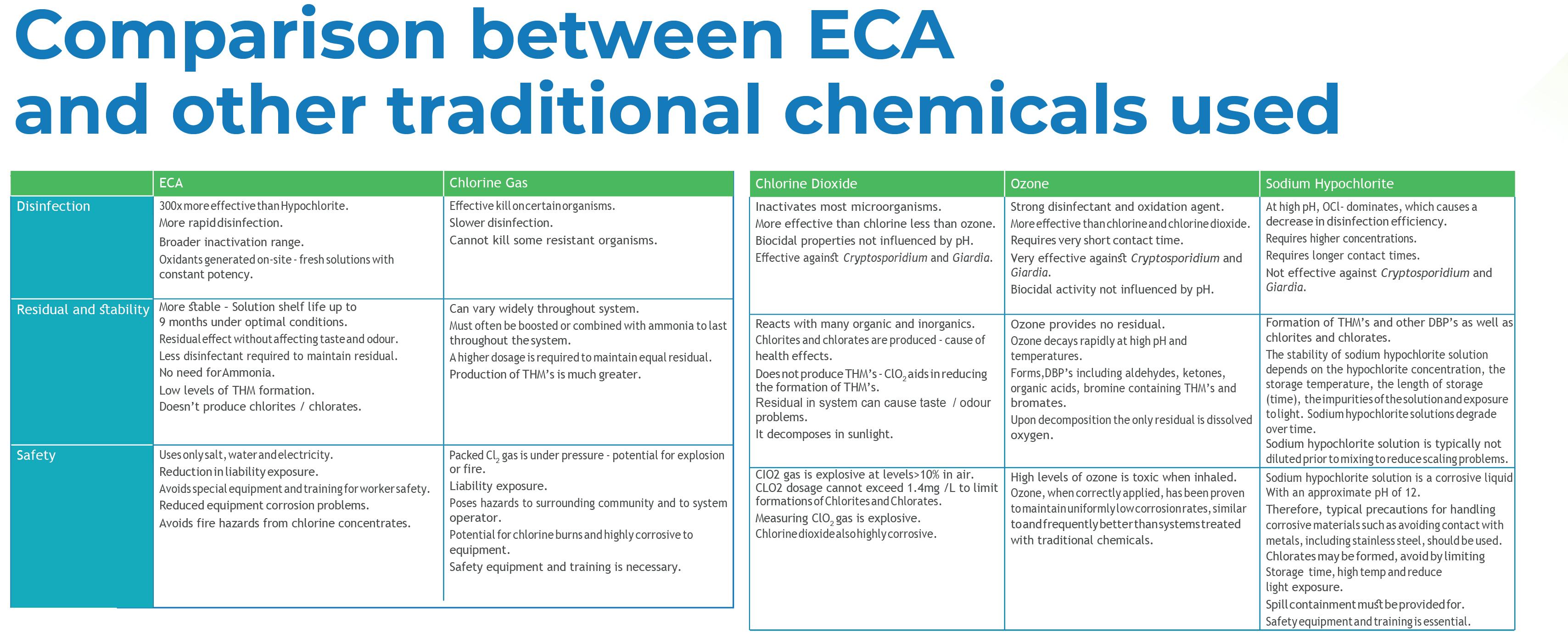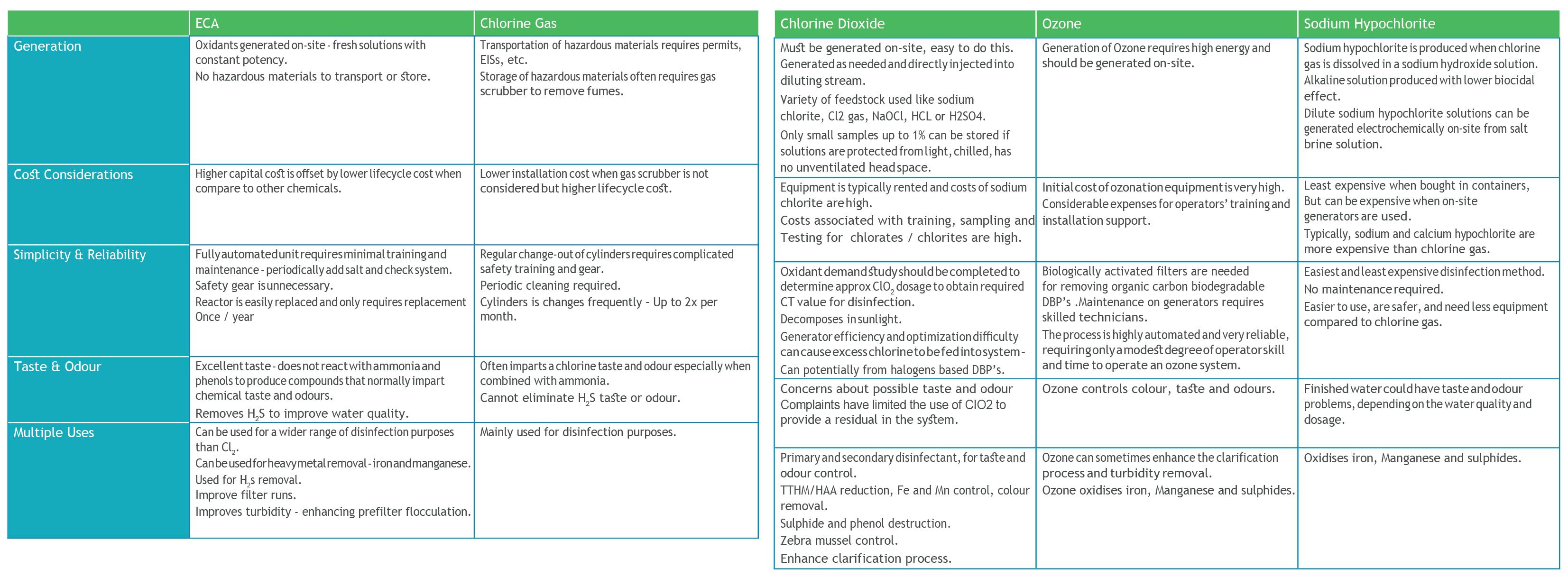Frequently Asked Question
View common questions and answers relating to our products and links on where to purchase them online.
If you can't find what you are looking for, please get in touch.
| Question | Answer |
| What does ATP mean? |
ATP stands for Adenosine Triphosphate. This is the energy molecule found in all living cells and the presence of ATP signifies whether the surface is clean. |
| Is ATP swab testing internationally recognised for measuring pathogens? |
Yes. ATP testing is used around the globe and is a recognised tool by auditors for validating cleaning processes and complies with government and HACCP regulations. |
| How does ATP swab testing work? |
Adenosine Trisphosphate (ATP) is an energy molecule found in all living things. The detection of ATP is therefore a clear indicator in determining the efficiency of cleaning processes in removing bacteria. ATP hygiene testing works by combining ATP with a liquid-stable reagent. The chemical reaction caused by the combination emits light, which is then measured in Relative Light Units (RLU) as a direct proportion to the amount of ATP present. The process of ATP testing is straight-forward and easy to use. Simply swab the area you would like to test. Snap the valve at the top of the swab, then squeeze the liquid down to the bottom of the swab to react. Place the swab inside the luminometer and record the results. |
| What are Relative Light Units (RLU) |
RLU stands for Relative Light Unit and is the unit of measure used in bioluminescence. When a test swab is activated, a bioluminescent reaction occurs, generating light output. Luminometers measure and quantify that light with an RLU output. However, because the ATP bioluminescence reaction is linear, the more ATP present means the more light will be present. The relationship between the amount of ATP on the sample and the RLU result reading on the luminometer is simple: The RLU reading is directly proportional to the amount of ATP collected from the sample. A high RLU reading indicates a large amount of ATP at the test location. This in turn indicates improper cleaning and the presence of contaminants. Cleaning properly results in less ATP at the location. Less ATP results in less light output during the bioluminescent reaction and consequently, a lower RLU reading. |
| What is an acceptable RLU measure? |
The SystemSure Plus ATP testing system comes preset with Pass and Fail limits of 10 and 30 respectively. Any score of 10 RLU or less is a Pass. Scores from 11 to 30 RLU are a Caution. Any score greater than 30 RLU is a Fail.
Default RLU limits - Some users prefer to eliminate the Caution area and set both Pass and Fail limits to 10. Any score of 10 RLU or less is a Pass. Any score greater than 10 RLU is a Fail. Default RLU limits no caution - The default limits of 10 and 30 RLU are based on years of experience in food and beverage industries and published third-party studies.
|
Hypochlorous Acid (Atmosan Biocide)
| Question | Answer |
| What is Hypochlorous Acid (HOCI)? |
HOCl is the scientific formula for hypochlorous acid, a weak acid similar to that of a mild citrus juice and is is made naturally by white blood cells in all mammals for healing and protection. HOCl is a powerful oxidant that is effective against invading bacteria, fungi, and viruses, and is now used in healthcare, food safety, water treatment, and general sanitation Atmosan HOCl is manufactured under licence by running electricity through a solution of saltwater which was a method was discovered in 1970s. |
| Why is Hypochlorous Acid so Effective in Killing Pathogens? - Hypochlorous Acid (HOCl) vs. Sodium Hypochlorite (Chlorine Bleach) |
Hypochlorite ion carries a negative electrical charge, while hypochlorous acid carries no electrical charge. The hypochlorous acid moves quickly, able to oxidise the bacteria in a matter of seconds, while the hypochlorite ion might take up to a half hour to do the same. Germ surfaces carry a negative electrical charge which results in a repulsion of the negatively charged hypochlorite ion to the area of the germ surfaces, making hypochlorite ion less effective at killing germs. The ratio of the two compounds is determined by the relative acidity (pH) of the water. Water treatment specialists can adjust the pH level to make hypochlorous acid more dominate, as it is more efficient at killing bacteria. The hypochlorous acid's lack of electrical charge allows it to more efficiently penetrate the protective barriers surrounding germs. |
| How does Hypochlorous Acid compare with other disinfectants? |
|
| Is Atmosan Biocide (Hypochlorous Acid) accredited and approved? |
Yes, our Atmosan Biocide product is accredited and approved to the following European and British Standards;
|
| What range of microorganisms is Atmosan Biocide effective against? |
Atmosan Biocide (Hypochlorous Acid) has proved effective against micro-organisms including, but not limited to: Bacteria
Bacterial Endospores
Fungi
Viruses
Yeasts
Moulds
Protozoa
|
| Does Hypochlorous Acid Kill Covid19 and or Coronavirus? |
COVID-19 Viruses are unique because they are only alive and able to multiply inside the cells of other living things. The cell they multiply in is called the host cell. A virus is made up of a core of genetic material, either DNA or RNA, surrounded by a protective coat called a capsid which is made up of protein. Sometimes the capsid is surrounded by an additional spikey coat called the envelope. Viruses are capable of latching onto host cells and getting inside them. What type of virus is COVID-19? Viruses can be generally categorised into three groups by virus structure. This affects the effectiveness of disinfectants in killing the viruses.
Coronaviruses are enveloped viruses, meaning they are one of the easiest types of viruses to kill with the appropriate disinfectant product. How can a company claim that a specific product should be used effectively during the COVID-19 outbreak? During an outbreak of a new virus like COVID-19, no products exist on the market that can make claims to kill the virus. This is due to the simple fact that the virus is not available to test, and it can take more than one year to get a viral claim approved by a regulatory agency. For this reason, Biocide Regulatory Agencies such as the United States Environmental Protection Agency (EPA) and the European Chemicals Agency (ECHA) have enacted a ‘hierarchy-based’ policy. This means that if a company’s product has been found to be effective against harder-to-kill viruses, it is likely to kill a virus like COVID- 19. A product that is likely to provide the greatest protection from COVID-19, will have claims against at least one non-enveloped virus such as Norovirus, Feline Calicivirus, Poliovirus, Rhinovirus, or Reovirus. This theory is the basis by which EPA and ECHA assess the efficacy of biocides against viruses. It should also be noted that laboratories that are equipped to test viruses are very specialised, accredited facilities, and for extremely virulent viruses are usually Government controlled. There are several companies currently advertising virus testing based in Kuala Lumpur and Thailand, but these are not ECHA or EPA regulated or accredited. There are no accredited laboratories in the UK currently testing for the specific Covid-19 virus. EN 14476 EN14476 is a European standard for testing the efficacy of biocides against viruses. There are very few accredited laboratories in the UK or Europe that are equipped to test for viruses. EN14476 uses the test against 3 types of virus;
This is for determining viricidal activity and the efficacy of biocides. Our Biocides have been tested against 2 of the 3 viruses (Poliovirus & Murine Norovirus) and have been proved to have high efficacy levels 99.999999% which is log reduction 8. The pass rate for EN14476 is log reduction 5 = 99.999%! What is Coronavirus? COVID-19 is a new illness that can affect your lungs and airways that was first identified in January 2020. It's caused by a virus called coronavirus. But we will all know this by now. There is currently no vaccine to prevent COVID-19 acute respiratory disease. The best way to prevent infection is to avoid being exposed to the virus. The symptoms, which may develop in the days after exposure include a persistent cough, high temperature and a shortness of breath. More information can be found on NHS England’s website here. How easy is the Coronavirus to kill? Coronaviruses are enveloped viruses, and it is known that viruses that have an envelope coating are easier to kill, at least outside of the human body. This lipid (fatty) bilayer is its weakest link and soap dissolves the fat membrane and the virus falls apart “like a house of cards and dies,” explains by Pall Thordarson, a professor of chemistry at the University of New South Wales, Sydney, in an article featured recently in the Guardian. In fact, viruses in vitro (or outside of the body) are relatively easy to kill on surfaces with disinfectant – it’s a good contact that’s vital here, between the disinfectant or soap wash. And the coronavirus, as with most viruses, are unstable and won’t last long outside of the body. Even prolonged dry conditions or certain UV light will do the same, let alone commercial disinfectants for professional cleaning or soak washes and alcohol hand gels for personal hygiene. How is the Coronavirus transmitted? “When you cough, or especially when you sneeze, tiny droplets from the airways can fly up to 10 metres,” explained Professor Thordarson. “The larger ones are thought to be the main coronavirus carriers and they can go at least two metres.” Professor Thordarson goes on to explain: “These tiny droplets end on surfaces and often dry out quickly. But the viruses remain active. Human skin is an ideal surface for a virus. It is organic and the proteins and fatty acids in the dead cells on the surface interact with the virus.” So, when you touch a surface with a virus particle on it, it will stick to you and get transferred on to your hands. If you then touch your face, especially your eyes, nostrils or mouth, you can get infected. And, depending on where you read, on average people touch their face once every two to five minutes. That’s how it’s commonly believed to be transferred within a population. And, why it’s vitally important to keep work surfaces and, in particular, hands hygienically clean. That’s why washing your hands with soap, where possible, is such an effective way to encourage personal hygiene. However, it’s not always possible to do so, and why surface disinfecting with AtmoSan Biocide is also of the utmost importance. |
| Why choose Hypochlorous Acid ? |
Hypochlorous acid (HOCL) is entirely organic and harmless if ingested, and it is a water-based disinfectant that does not dry out the skin. Hypochlorous acid occurs naturally in the human immune system. It’s what the cells in our bodies use to fight infections. Our hypochlorous acid products are produced from three everyday components: water, food grade salt, and electricity. When you use hypochlorous acid for disinfection, it oxidises and is consumed. Our hypochlorous acid products have been independently laboratory-tested as completely safe for humans and without health risks. They are even being used to treat drinking water. Our products are non-flammable, non-toxic, and are easy to dispose of. They contain no alcohol and unlike alcohol-based disinfectants, it is gentle on the skin and avoids irritating or drying out the skin when frequently used. They’re kind to humans and animals, and kind to the environment. |
| Question | Answer |
| What is dry mist fogging? |
Dry fogging is a relatively new decontamination technology that uses liquid disinfectant such as Atmosan Biocide (Hypochlorous Acid). The ultra-fine droplet size of the dry fog prevents it from easily falling onto surfaces, a desirable quality for space/ area decontaminations. Dry Fogging is sometimes described as Ultra Low Volume (ULV) Fogging. |
| What is a ULV fogger? |
ULV fogging equipment is used predominately for the application of disinfectants, biocides, fungicides and pesticides. Our ULV fogging machines generate a fog or mist formed of Ultra Low Volume (ULV) droplets between 5-50 microns (μm) in diameter. Studies have shown that droplets of this size are ideal to tackle pathogens, vector carriers and pests. In addition formulations can be applied in concentrations of 10-90% and at flow rates of up to 0.5 litres per minute (30 litres per hour) making them more efficient in the Volume Median Diameter (VMD) spectrum. |
| What types of foggers can I choose from and how do I know which fogger to buy? |
We have a range of foggers available and would be more than happy to discuss your specific requirements with you. These start from a handheld fogger, with a shoulder strap for manual and more objective fogging on high touch points and equipment, all the way through to a high capacity rotary fogger, with a digital timer, and can be left to self-operate for a number of hours. We offer battery operated foggers, as well as mains powered units, which provides a perfect solution when Mains power is not available. |
| Will fogging damage Electrical equipment, Fabrics etc? |
Compatibility to electronic equipment has been thoroughly tested by a public health agency in Canada, and was assessed by repeatedly exposing personal computers to the dry fog over a 6-month period. All test microbial agents were inactivated by the dry fog; laboratory decontamination and mould remediation validations were successful. No functional impairment was detected in the personal computers following six rounds of exposure. Due to the tiny droplet size omitted, even materials like delicate fabrics and bedding will not be affected. In combination with our organic and natural Atmosan Biocide product, you can have peace of mind that nothing needs to be protected prior to use, including minimal for PPE during fogging. |
| How much Atmosan Biocide Liquid do I need to order for my fogging system? |
Our Mini Fogger, AtmoSonic series 200 has a 3 litre capacity , and our Largest fogger, AtmoSonic Series 300 has an 8L capacity. This would give you an indication of what amount to buy for your first order. For ongoing use, your consumption depends entirely on the size of the space you are decontaminating. Most foggers will have a pre-specified range of how many cubic metres it can cover if left standing still in the centre of a room. Please get in contact today with one of our experts on this subject to discuss your specific requirements and receive an estimate of your Biocide usage. It would be useful if you could provide the dimensions of your room, including the width, length and height of the room. |





